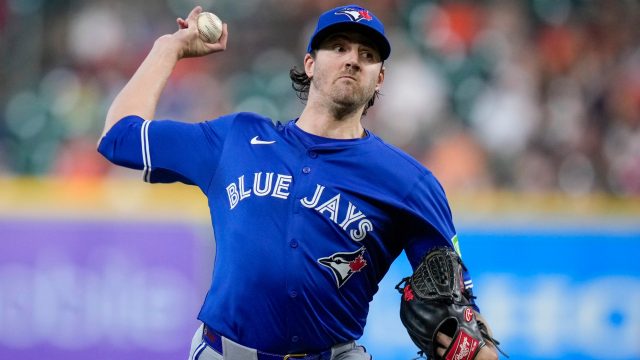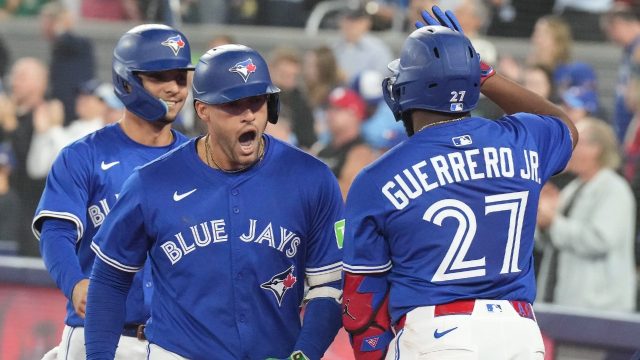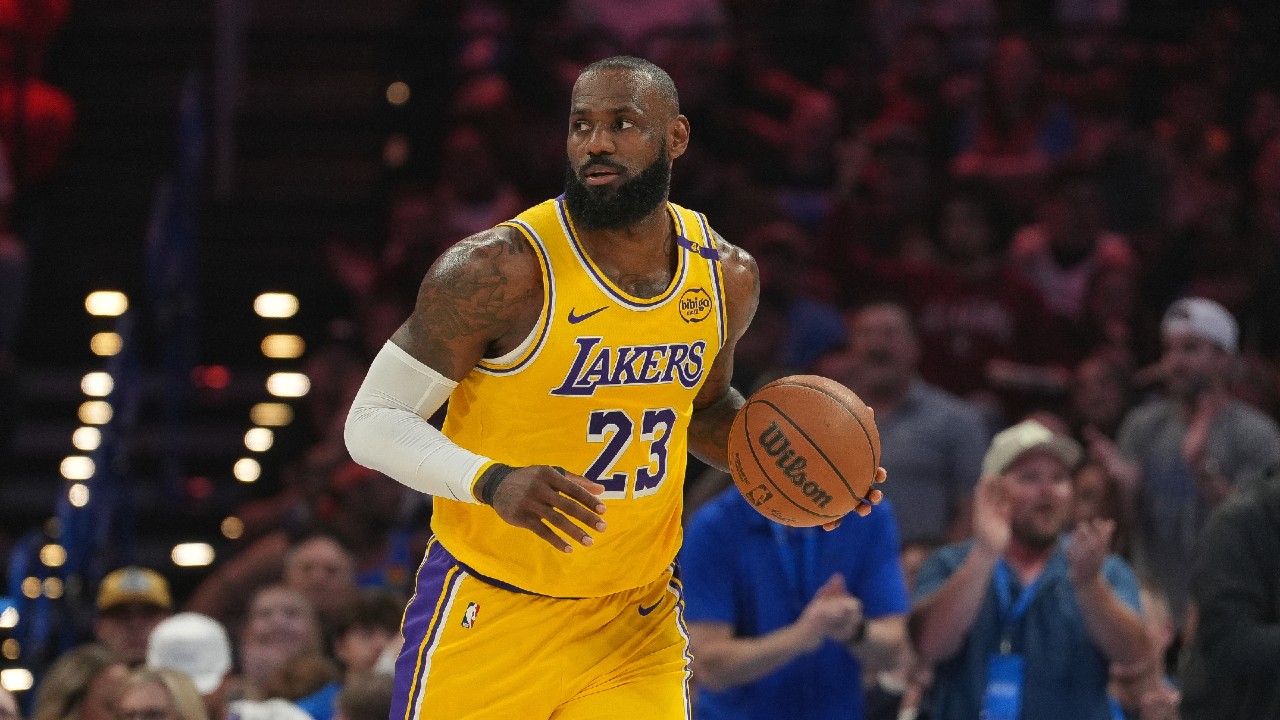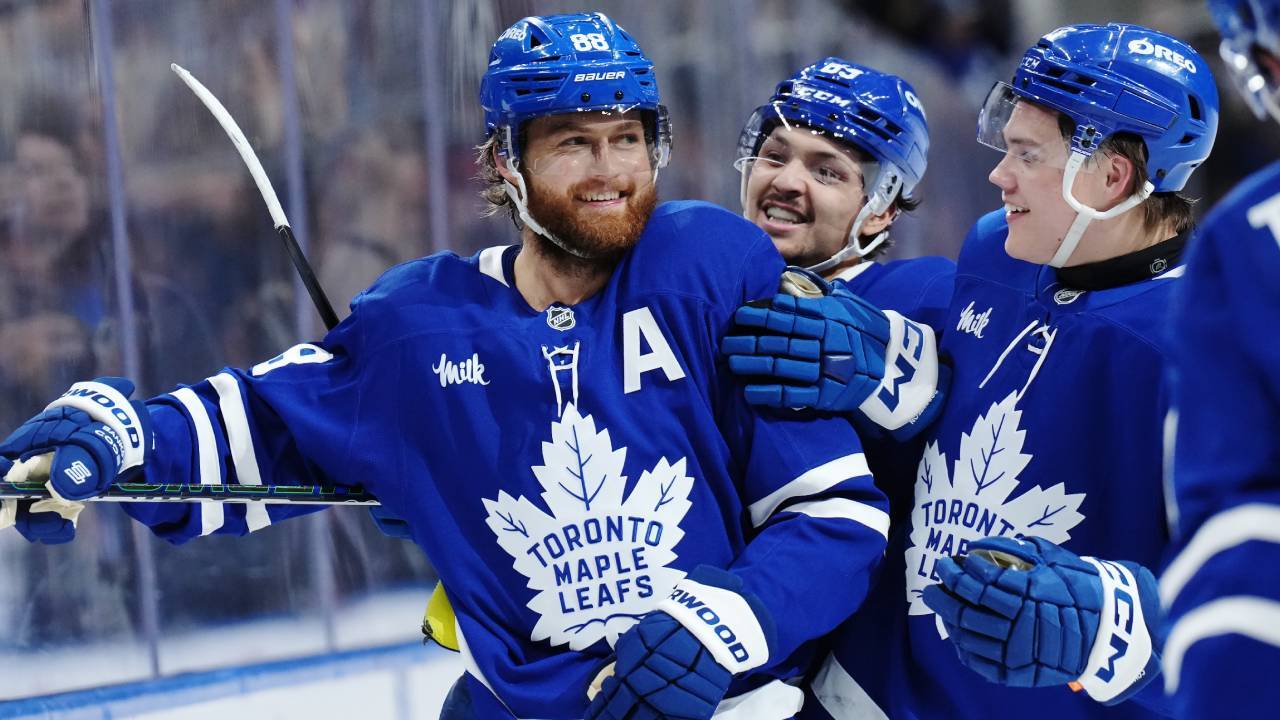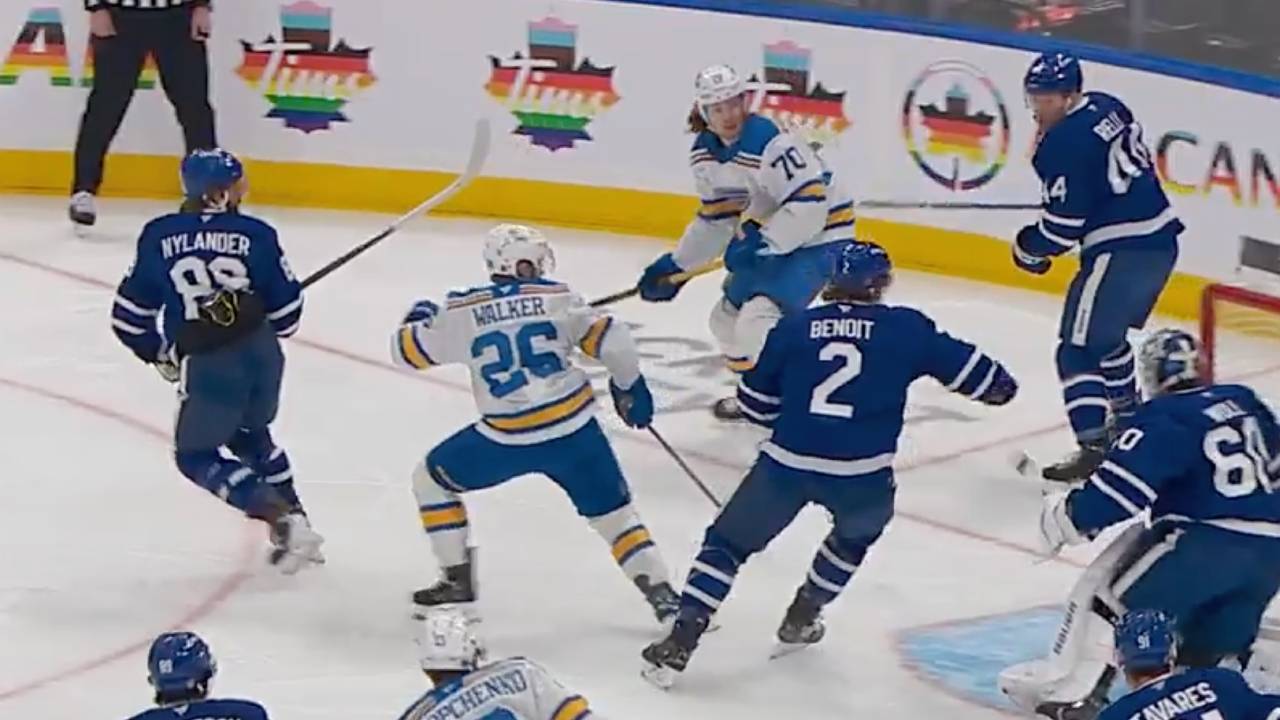
TORONTO — The first steps in the largest single-season turnaround in Toronto Blue Jays history — a remarkable 20-win surge that carried them from worst to first in the American League East this year — took place last September, when the team looked inward and decided to talk.
Their dismal 2024, on the heels of the 2022 wild-card collapse to Seattle and the messy 2023 post-season loss at Minnesota, left plenty to discuss, especially with the club approaching a competitive-window crossroads. In turn, there was an urgency to diagnosing what led to the 88-loss setback, and whether it was merely an aberration or something more.
So, as the Blue Jays trudged their way to the finish line, the debriefings began.
“Just being brutally honest with players, having them be brutally honest with me and the staff, and just taking a step back and saying like, ‘Hey, to a man, where did we (expletive) up? Is it bad luck? Is it health? Is it how we’re doing things? Is it how we’re preparing? Is it how we’re messaging? Is it how I’m doing that to you guys?’ Starting there and being as vulnerable as you can with the job that everyone did,” manager John Schneider described.
Ace Kevin Gausman remembers that “everybody was like, ‘We’re way too good to be playing like this, to have the season we had with the talent we have.’ Everybody was pissed. A lot of conversations were had and it was like, we need to fix a lot of stuff. It was really like a punch in the face after the two years before making the post-season. We kind of got a little, not cocky, but not as buttoned up in every category as we needed to be.”
Chris Bassitt traced the trouble to 2023.
“We thought we had a good enough team to possibly win a World Series and then we pull Jose (Berrios) and that’s the big discussion afterwards, like why that happened or whatever it may be. And I feel like there weren’t too many changes because it was like, we should have been a lot better and were just barely off. So we went into ‘24 with not a lot changed and then we got exposed,” he said.
Added George Springer: “Everybody believed in us as a team. There were a lot of guys that really knew we were a good team and sometimes a good team can have a tough year. There are enough guys in this locker room that have been through it before, that know how to navigate that and turn the page and learn from what went wrong and what didn’t.”
-
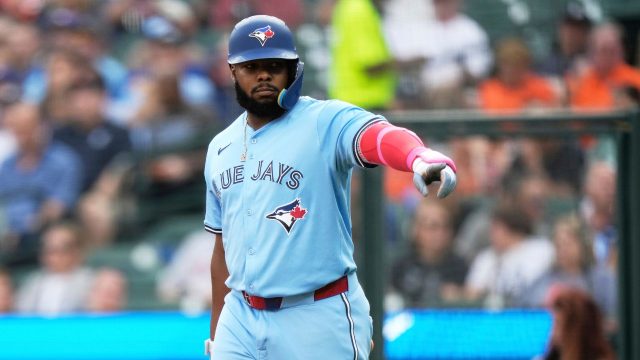
-
Watch Blue Jays in ALDS on Sportsnet
The Toronto Blue Jays’ post-season journey begins Saturday against the Yankees, with Game 1 of the ALDS at Rogers Centre. Catch the action on Sportsnet and Sportsnet+, starting at 4 p.m. ET / 1 p.m. PT.
The Blue Jays did precisely that, as those initial discussions picked up in the off-season. Eventually, the conclusions drawn from that introspection, and the changes they led to, reset the franchise’s foundation and helped produce a seventh AL East title, as well as home-field advantage over the New York Yankees in an American League Division Series that opens Saturday (Sportsnet and Sportsnet+, 4:08 p.m. ET / 1:08 p.m. PT). As it turned out, with due respect to Charles Dickens, 2024 bent and broke them into a better shape.
“Everyone, including myself, looked at (last year) like a complete loss,” Bassitt said. “And then you look at it now, getting exposed last year was probably the best thing to happen to this organization because that’s when we made all the changes.”
***
To his credit, Schneider opened everything the Blue Jays did to organizational navel-gazing, from game preparation and the type of information given to players to the ways information is conveyed and meetings are run. He and the front office placed value on the feedback from players “because they’re the ones that have to do it and live it every day.”
And the players, to their credit, sought to understand why the club had done things they way it did before making suggestions for how things should be done instead.
For example, one major discussion centred around the Blue Jays’ defensive alignment and which factors were used to decide where fielders should set up. Was it based on a hitter’s swing path? Their spray chart? Scouting reports? The way they planned to pitch a hitter?
In turn, that led to questions about how their pitch recommendations for pitchers were being determined.
“We talk with pitchers (on other teams) about hitters all the time,” recalls Gausman, “so why when I talk to so-and-so, they say their fourth rec on this guy is a slider, but our second rec is slider? Is there something we’re missing? Is there something that everybody else is using that we are not? Are we using too much slug when looking at those things? Too much exit velo?”
Then there was connecting the two, as sometimes the Blue Jays’ positioning was aligned to a hitter’s strengths, which didn’t fully make sense when pitchers are attacking a hitter’s weaknesses.
As a result, “if he hits the ball where we want him to hit it, no one’s going to be there,” said Gausman. “There are so many different numbers, so to figure out where to put guys is actually a pretty hard question.”
With a game built around inducing weak contact, Bassitt is particularly dependent on good defensive positioning, and “I was like, a lot of this is wrong.”
“It wasn’t fun for the wives because we were on the phone so much, but we had a ton of meetings,” Bassitt continued. “We had a ton of FaceTimes with front office members and the coaching staff, just Zoom call after Zoom call being like, we really need to figure this out and we’re really opening up everything. We changed a lot of stuff on how we analyze players, how we analyze other teams, how we how we do shifts and things like that. And I think players are a lot more comfortable this year in what we’re getting presented, what we’re working with versus last year.”
***
On the offensive side, some of the revamp happened naturally with turnover on the coaching staff, where David Popkins was hired as hitting coach and Lou Iannotti as an assistant to join incumbent assistant Hunter Mense in refreshing the team’s approach.
Popkins spent the spring preaching the need for different swings in different situations, and a metaphor the Blue Jays quickly adopted was about knowing which club to pull from the golf bag in different situations. But he was more than just a fresh voice, as he brought over the know-how from the motion-capture process and reporting tool he helped develop with the Twins and said back in May that the team’s bio-mechanics department, “did a great job making that very quickly, starting to catch us up to where we need to be.”
On multiple levels, it’s worked, as the Blue Jays offence made better use of strong bat-to-ball skills by upping the quality of contact. They went from a slash line of .241/.313/.389 with 156 homers and 671 runs last year to .265/.333/.427 with 191 homers and 798 runs, which was fourth in the majors, this year.
“One of the big things is that everybody has bought into it,” said Springer. “Everybody understands that you can’t be a one-trick guy. You’ve got to be able to throttle down. You’ve got to be able to throttle up. You’ve got to understand the game. Like, there are certain times where it’s better to strike out and extend the inning instead of hitting the ball hard on the ground and grounding into an inning-ending double play. We’ve all embraced what our role is and what the game is asking us to do. Home runs come. Extra-base hits come. But guys have understood just be a tough out and do whatever it is you can to be an annoying hitter. That’s what we’ve done all year.”
Added Daulton Varsho: “I think we have a good idea what pitchers are trying to do to us, especially relievers. Starters are going to switch up what they do outing to outing, because they might not feel something, so obviously we have a game plan. But the adjustments in-game mechanics-wise, that’s what has helped me. Them being able to say, this is what we’re seeing, try to change this and see what happens. Having a good idea when I’m not feeling good of, hey, this is what I need to do to try to be able to be successful, that’s really cool.”
Schneider recalls being wowed by Popkins during his interview and described the entire hiring process as being beneficial for exposing him and the team to a variety of different ideas.
“There were definitely some things that we uncovered in conversations that were, ‘OK, that makes sense,’” he said. The changes he sees now revolve around “the conciseness (of info for hitters), really drilling down on pitchers’ tendencies, and then being able to adjust in-game. I think in-game has been the biggest difference in terms of messaging, in terms of adjustments to be made. It’s a stark contrast from last year.”
***
Another stark contrast comes in the way the Blue Jays more effectively deployed their players this year, and no number illustrates it more than this: they had the platoon advantage in 52.7 per cent of their plate appearances, good for 19th in the majors.
If that seems mid, consider that in 2024 they were last at 43.1 per cent, in 2023 they were third-last at 42 per cent, in 2022 they were last at 30.7 per cent and in 2021 they were last at 38.1 per cent. Add in that the Blue Jays had the second-most pinch hits this season at 36, resulting in the fourth-most RBIs at 23, and it’s clear that they better utilized the entirety of their roster, another off-season focal point.
Now, personnel plays a key role there, as the Blue Jays at long last carried a slate of left-handed hitters that made matching up more viable for Schneider. But the Blue Jays also built up a good process for mid-game changes, with Don Mattingly serving as bench coach this year after also acting as offensive co-ordinator last year, too.
During his pre-game work, Mattingly lists the various matchup possibilities based on the day’s starting lineup and the opposition bullpen, talks through the various scenarios with the rest of the coaching staff and then makes sure the players know what might be in store for them.
“For probably the first half of the year, I was every day, to each guy, like, ‘Hey, these are probably your spots. It could be hitting, pinch-running, defence, whatever the spots would be for that guy,’” said Mattingly. “And about halfway through, they all knew their roles. I’d say, ‘Hey, you guys know what we’re doing, right?’ So now it’s more like, do you need anything? And I just try to get with Schneids and be ahead of it. We do it a lot. So they know what we’re doing.”
Running things like that allows players to follow the game and know, based on how things are playing out, when they need to start getting ready and who they need to game-plan for.
That’s prevented hitters from being surprised with an at-bat, and helped the Blue Jays max out on platoon players like Addison Barger, Nathan Lukes, Myles Straw, Davis Schneider or, in a much smaller sample, Joey Loperfido,
“These guys don’t want to get all of a sudden, ‘Hey, you’re hitting,’” said Mattingly. “That’s the worst thing for me. I don’t want to do that to a guy. I want guys to at least know.”
Tampa Bay Rays manager Kevin Cash, who’s watched the entire evolution of this Blue Jays core from 2019 to now, notices the collective difference all the changes to the offence has made.
“Look, they’ve got very talented hitters,” he said. “Springer’s having a career year. Vladdy’s having his typical year. And they have a bunch of guys that are playing some big roles. I feel like the Blue Jays have always had good contact, but their bench right now is very contact-oriented. That makes it very challenging for the opposition late game, knowing you might get the left-handed matchup you want, but they have an answer with a right-handed bat that can come in and make contact and put pressure on the defence.”
***
As ambitious as a 20-win turnaround leading to an AL East title may have seemed while the Blue Jays talked through their various ideas during the off-season, Bichette insists he “could have imagined it” happening back then.
“I looked at last season from a team standpoint the same as I did for myself, as a bump in the road, see what you’re made of kind of thing,” he said. “When you look around the room, there are a ton of guys that have been there and done it. We knew we had that and a bunch of guys stepped up and that’s a special thing. So at that point, I could have envisioned it, but, definitely it was a lot of growth and a bunch of things we had to overcome to get here.”
Among them, ensuring the collective clubhouse focus is on the right things.
“There’s one goal in mind, to win, and nobody was going to let anything else distract us from that,” said Bichette. “You always go into every season with that being the goal, but there are things that get in the way. This year, we’ve kept it to one thing and good things happened.”
They have, and throughout the season, Blue Jays players and coaches have pointed to the way they’ve played each other, their care for one another, the strength of their bond as being a key ingredient in their mix.
Building that is something Alejandro Kirk stressed during the Blue Jays’ chats.
“If we have a good clubhouse, a good relationship with everybody — and I think we did a really good job with the old guys, the young players to build relationships with everybody — that’s the most important thing for me,” Kirk said. “If guys pull for each other, you’re going to have great results on the field. I think that’s why we’re here.”
Added Guerrero: “We’re all together. That’s the only thing I can say. Everybody is together and we do a lot of stuff together. To me, that’s good … it helps a lot. We think about our team, we don’t think about ourselves. We think about our teammates and believe in each other. That makes your job easier.”
Importantly, the Blue Jays didn’t stop their off-season conversation once spring training began and they didn’t forget what they had discussed. Schneider and his coaching staff, for instance, meet every two weeks to ensure all their checkpoints are being met and that the team’s processes aren’t falling by the wayside. New voices joined the organization and contributed their thoughts, too.
Max Scherzer has tried “to be a Swiss Army knife for everybody — coaches, analytics, veterans, rookies – they all need a different kind of message.”
“I’ve seen what works and what doesn’t and I gave that perspective,” he continued. “And honestly, the Blue Jays were as receptive as anybody. At times, you have a lot of ideas and it falls on deaf ears. But the Blue Jays organization listened to me on so many different things and made it fun because we were seeing real live changes.”
Added Bassitt: “I give full credit to the coaching staff and front office, they’re just putting us in a lot better positions. … The players have trust with the coaches and front office and the coaches and the front office have the trust of the players.”
After years of being less than the sum of their parts, that framework is how the Blue Jays finally added up to a greater whole.


